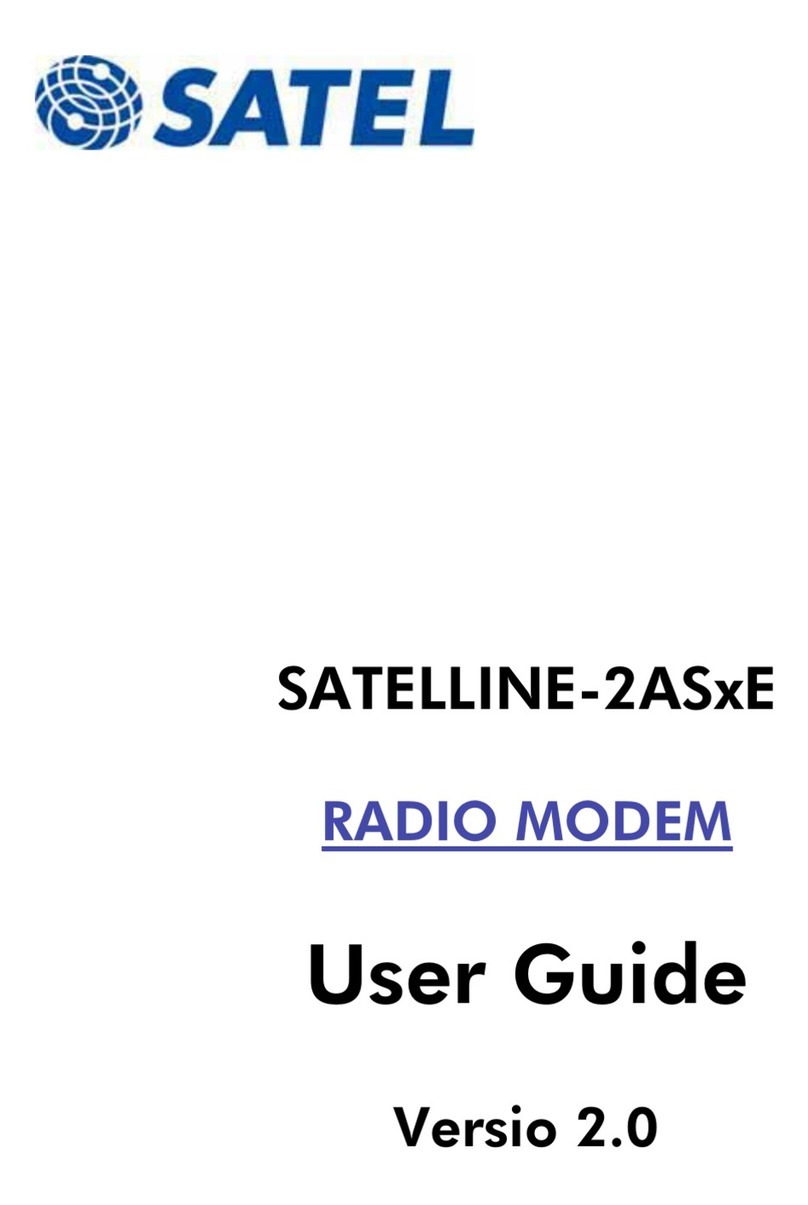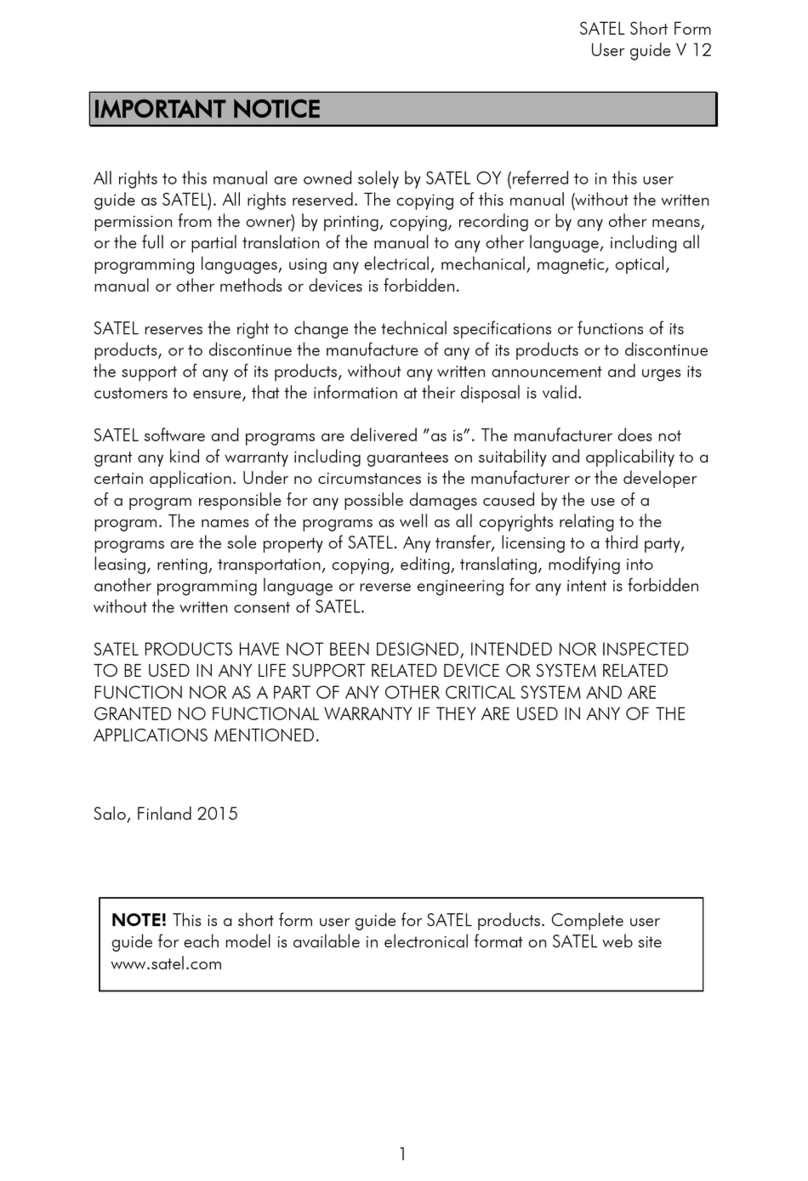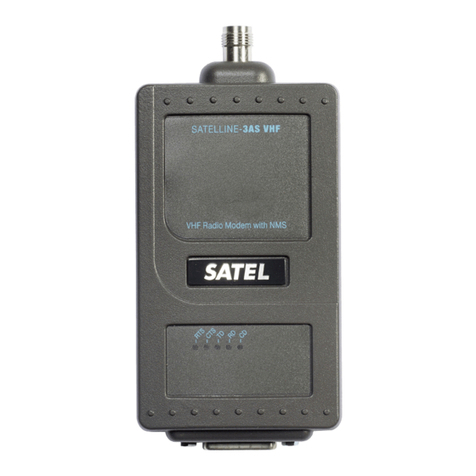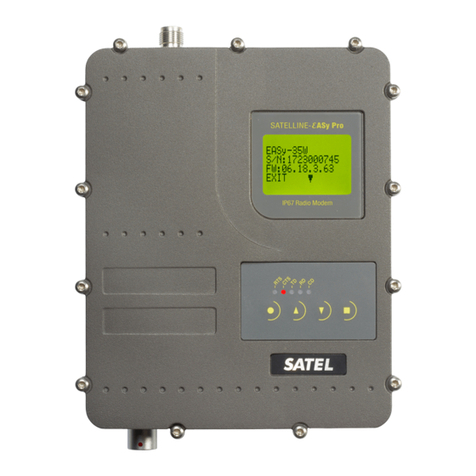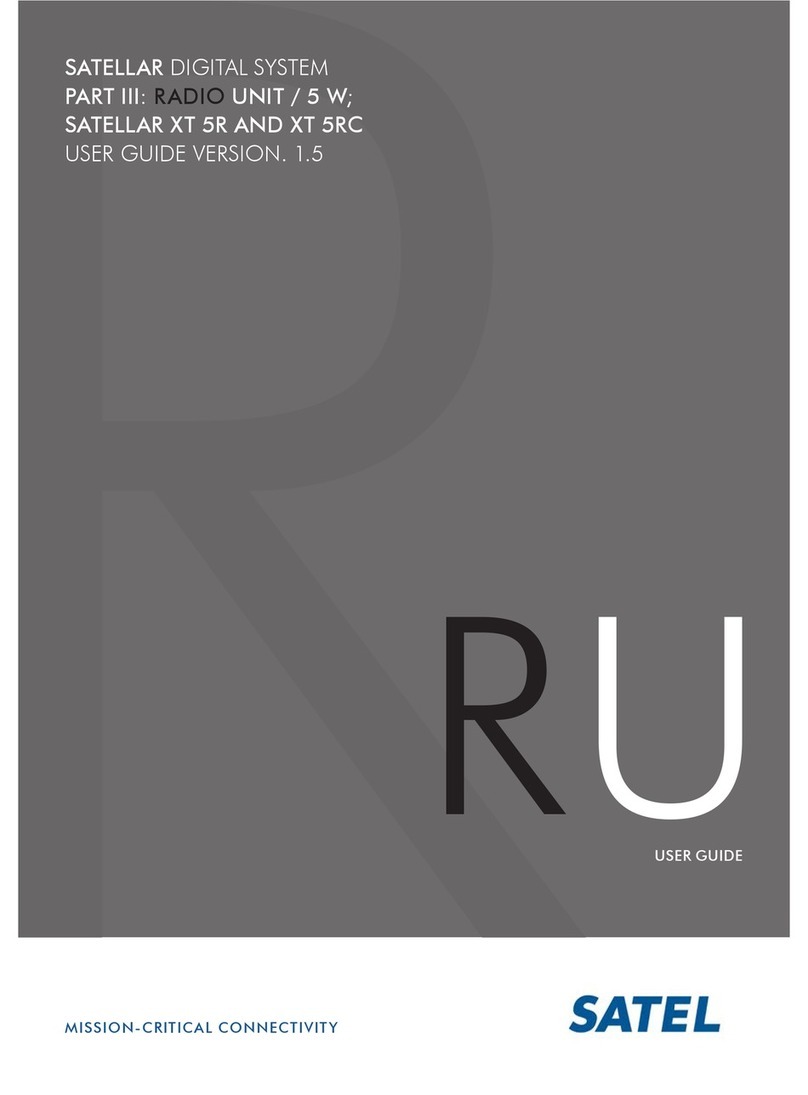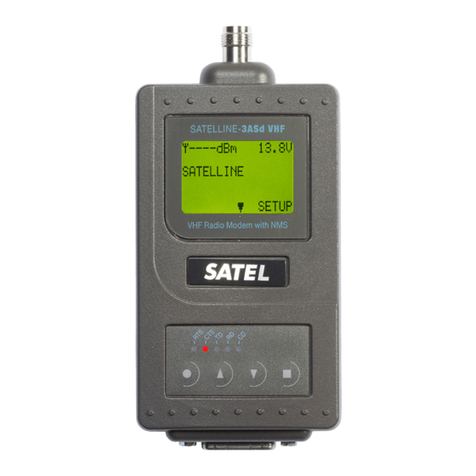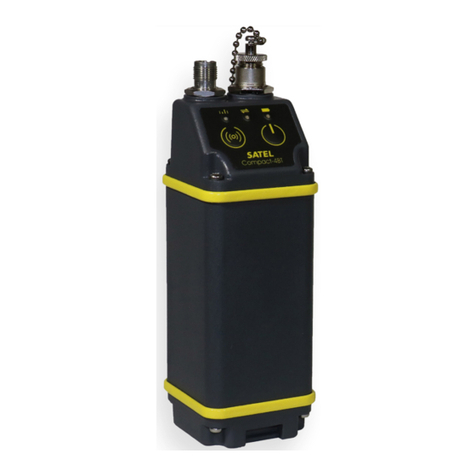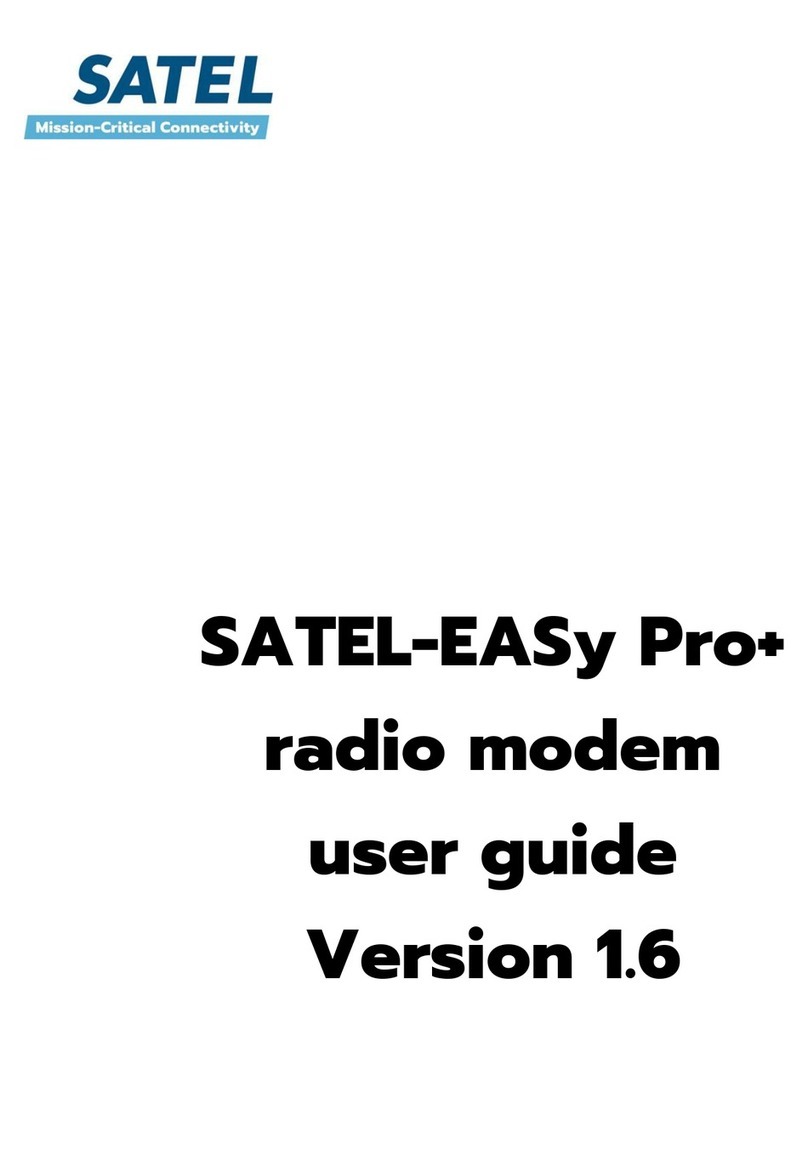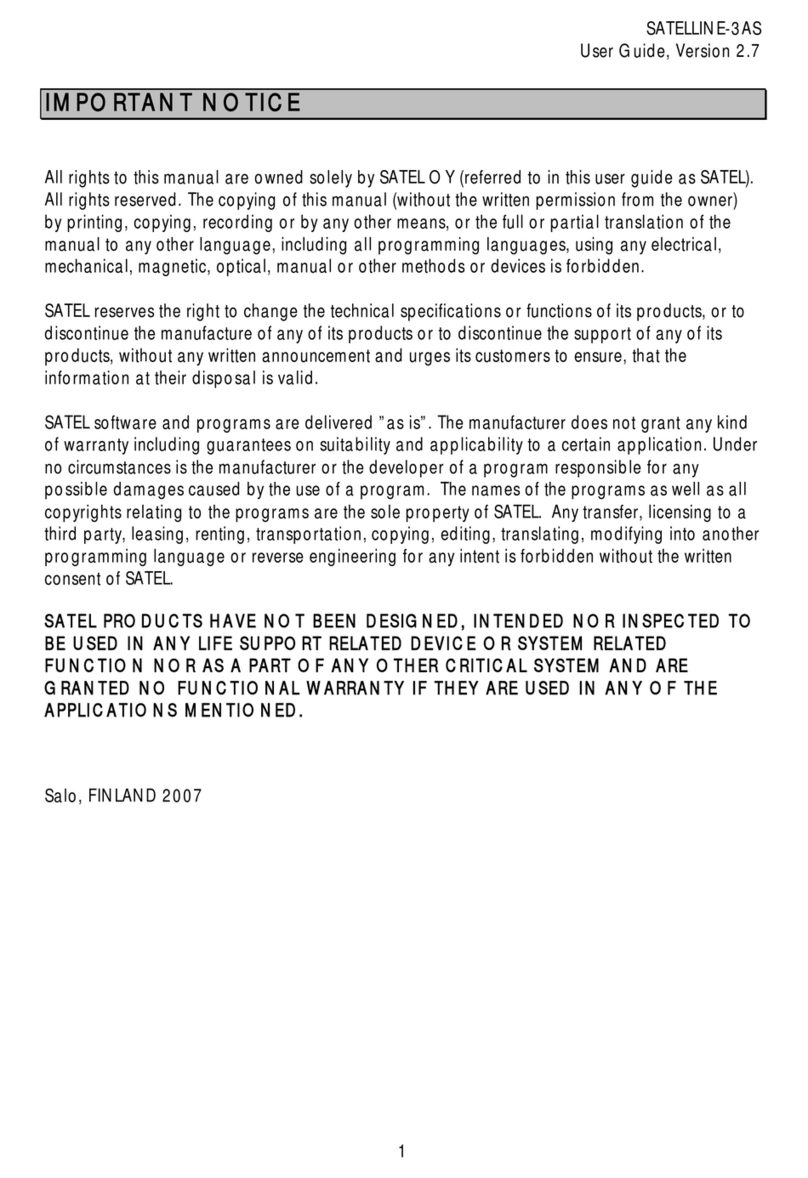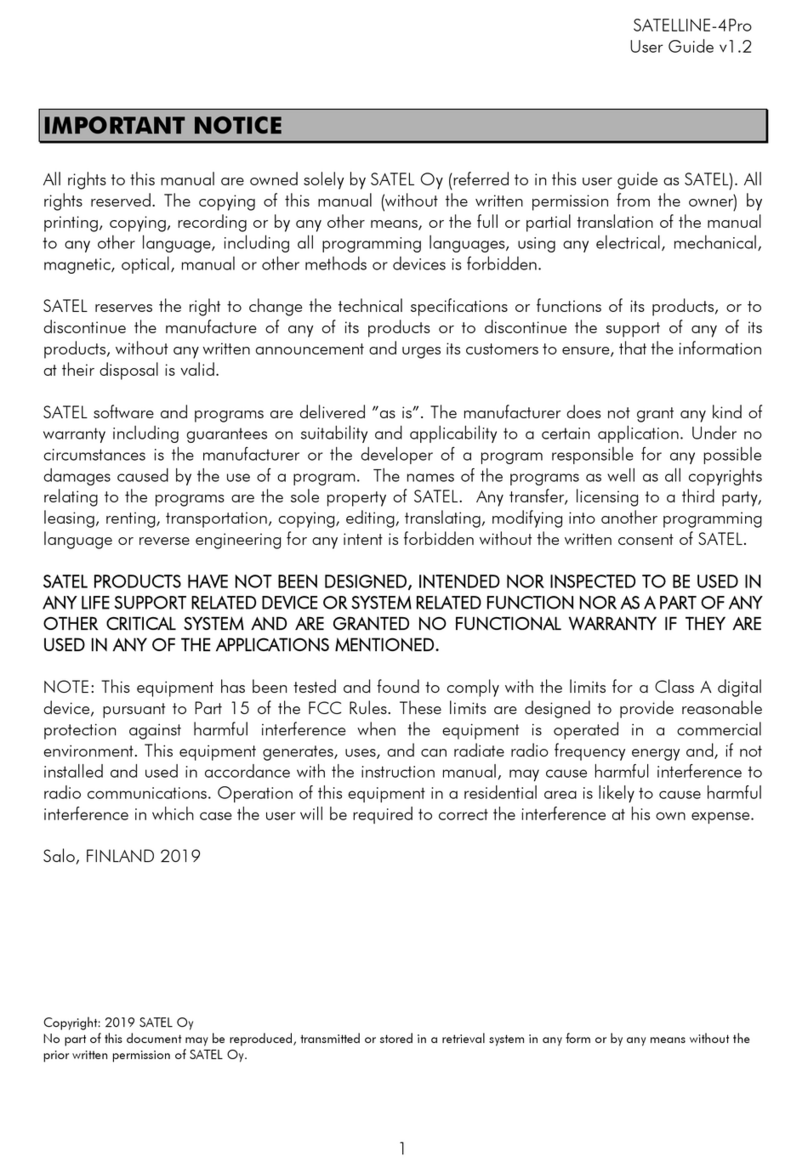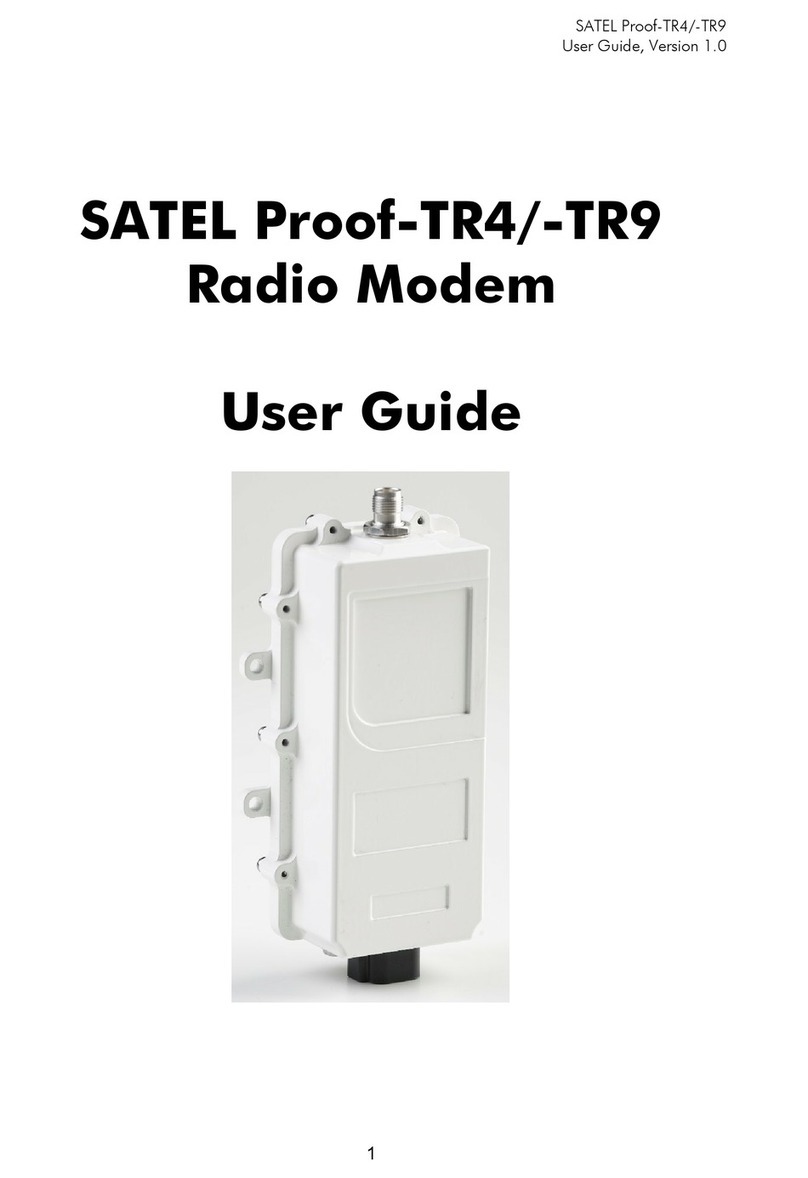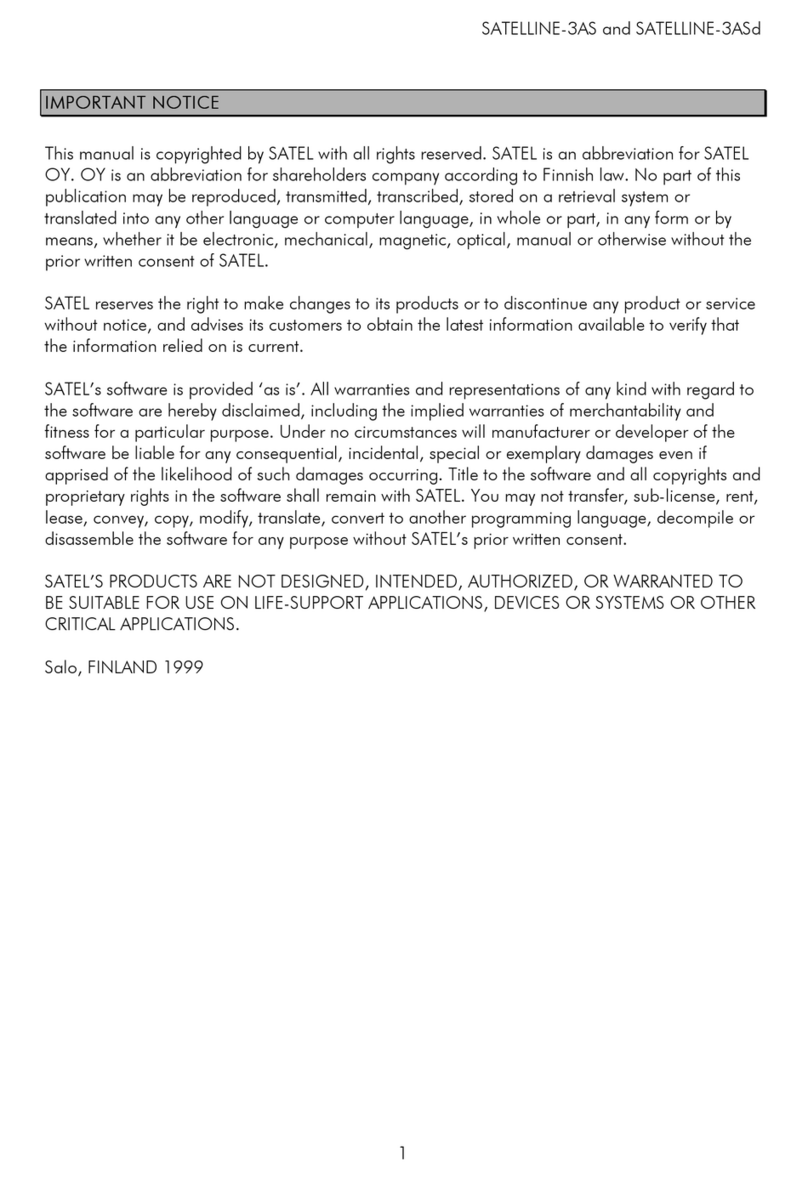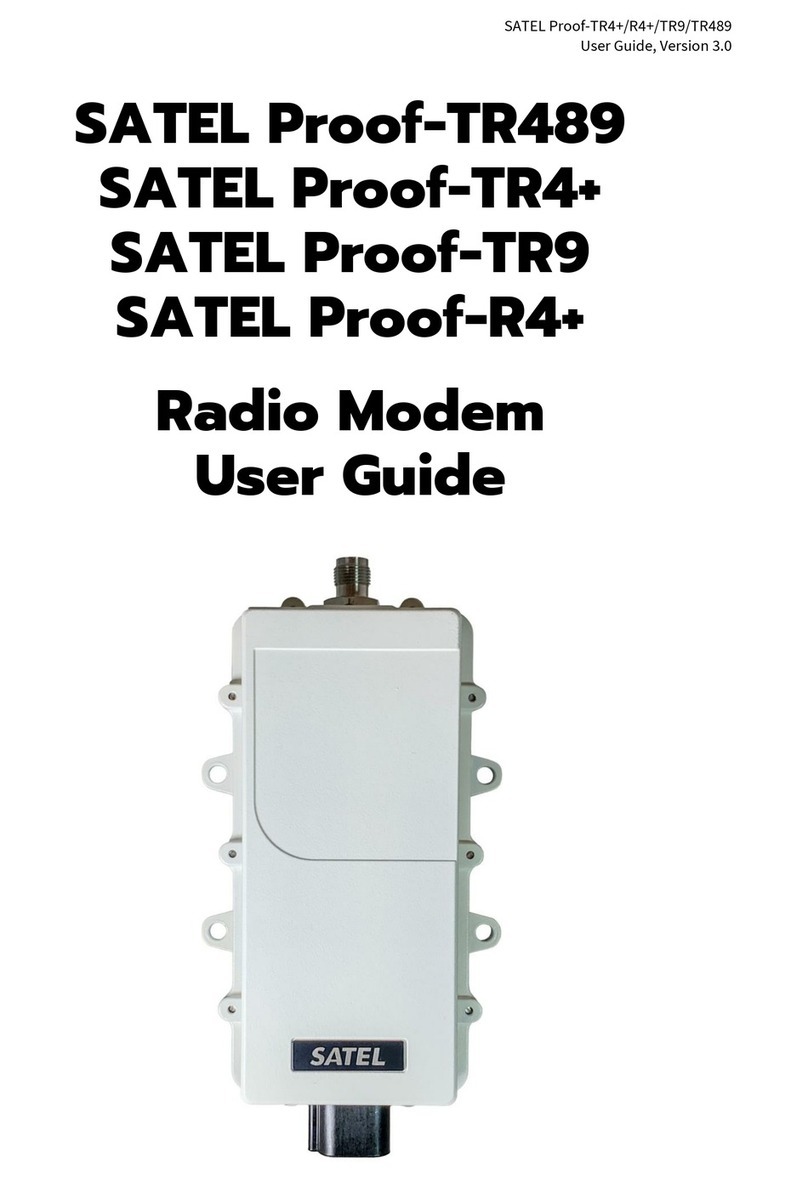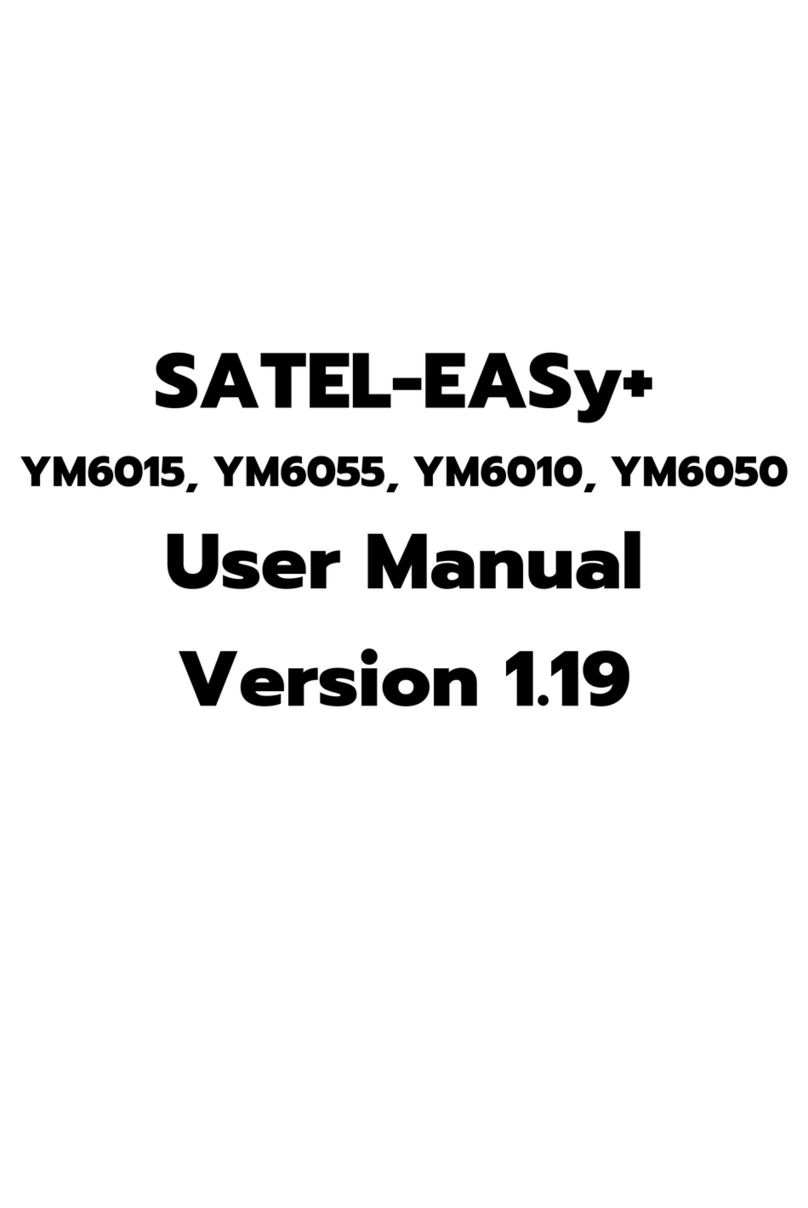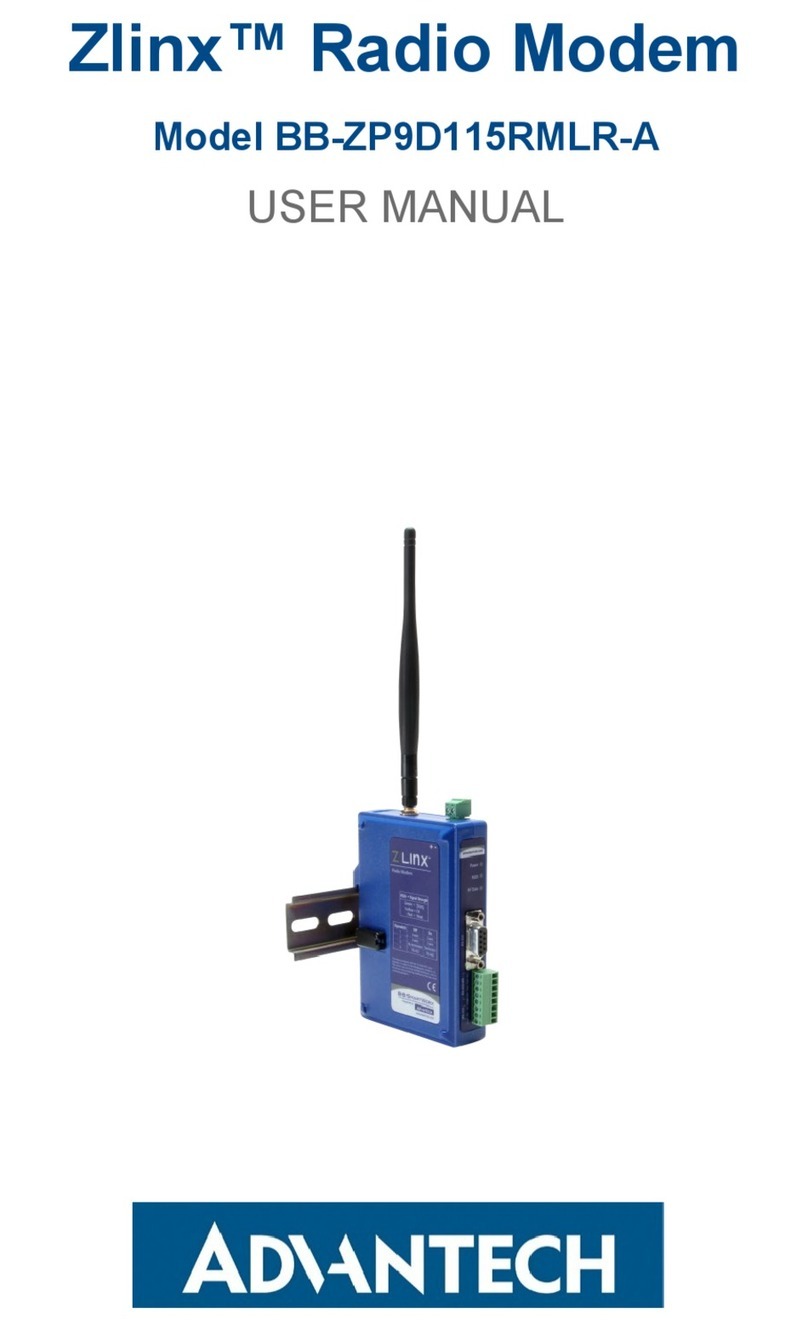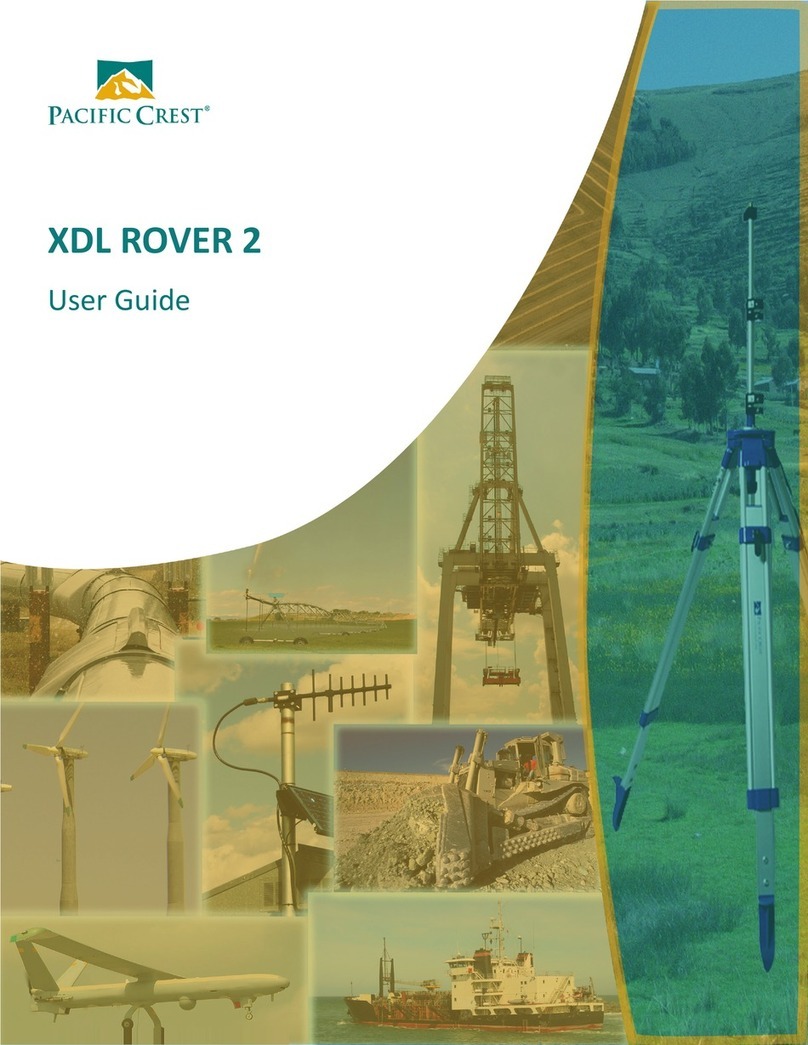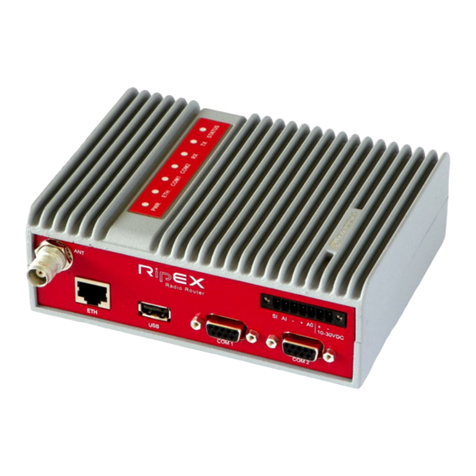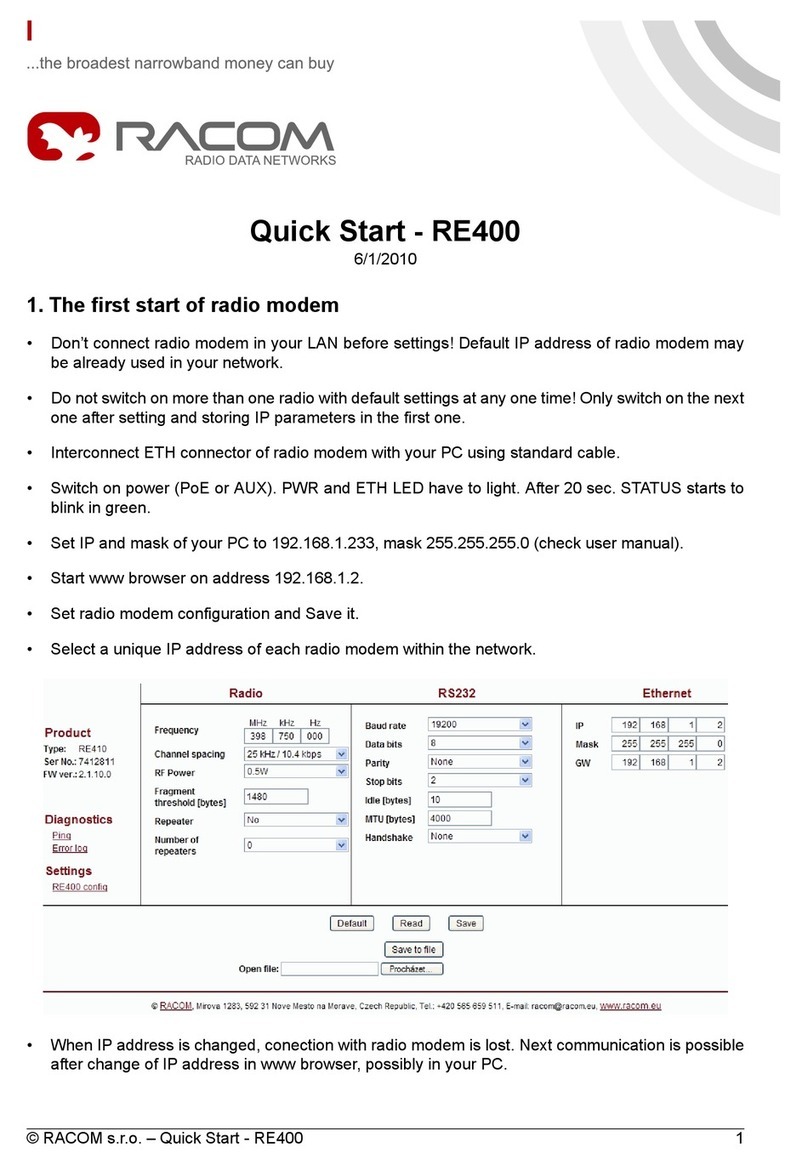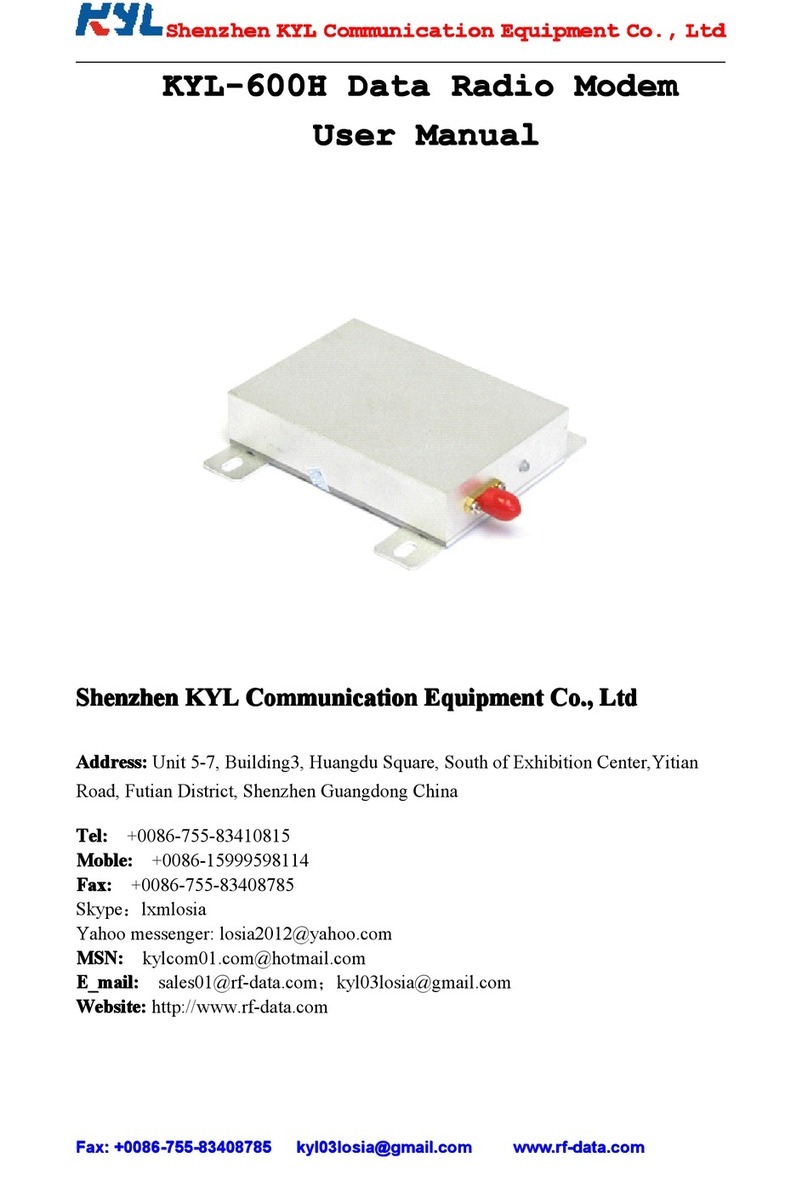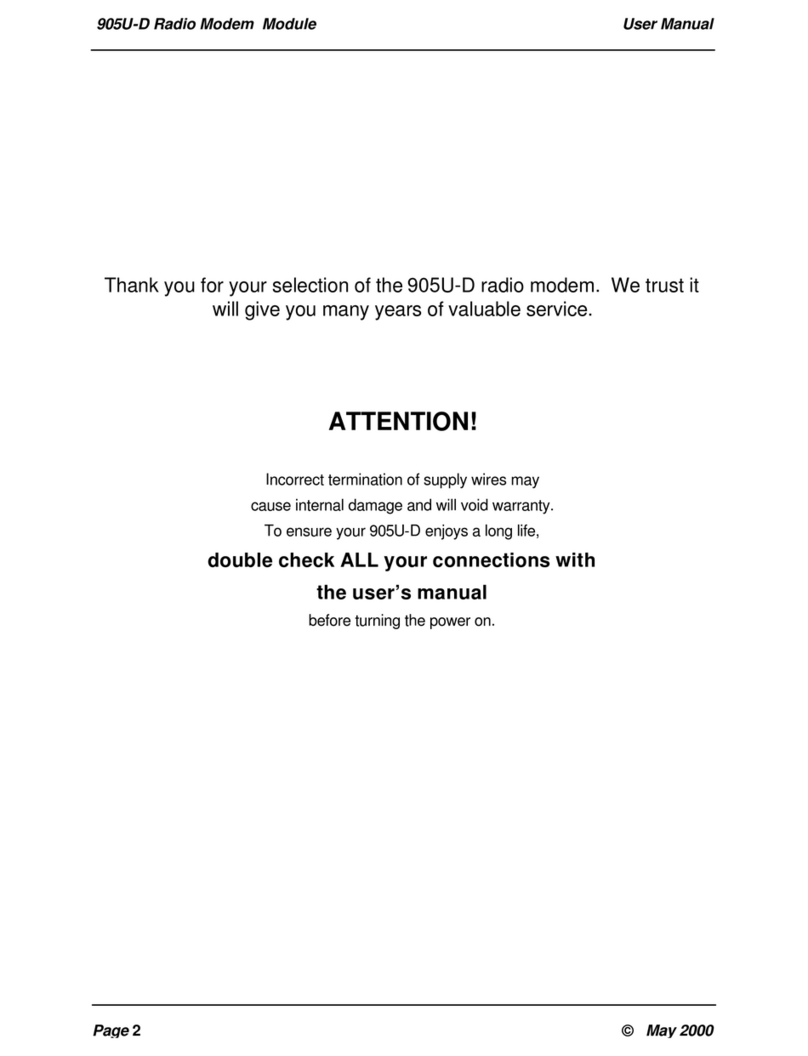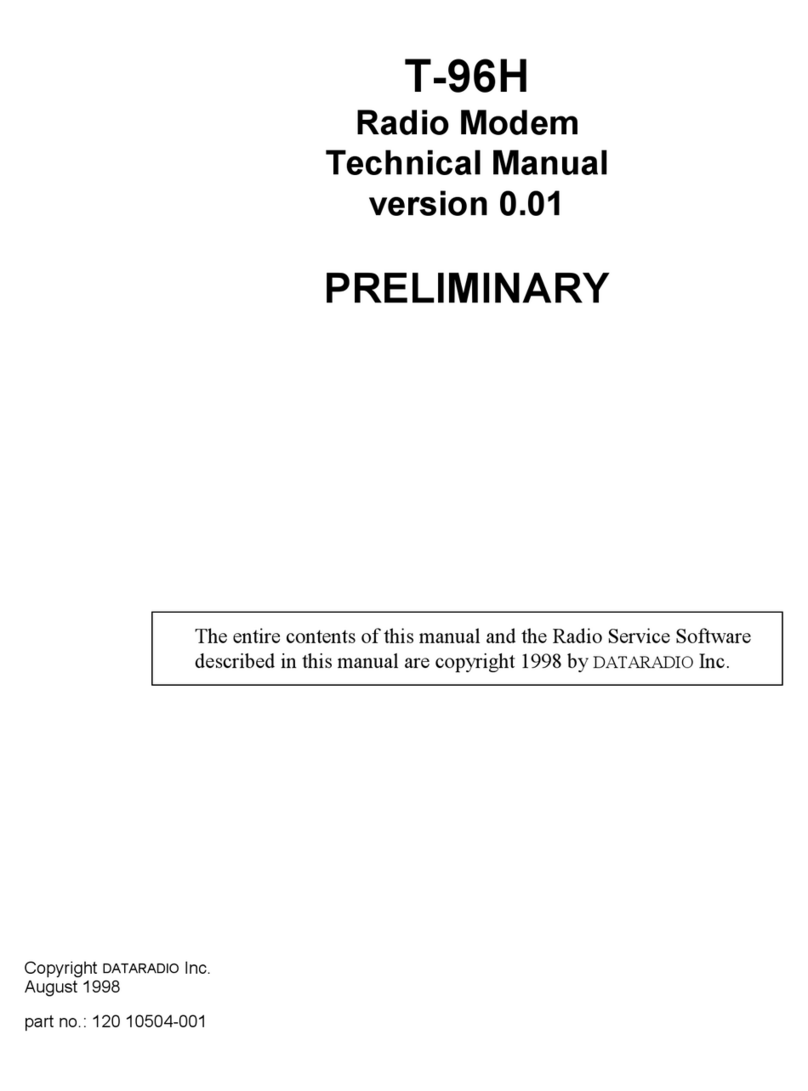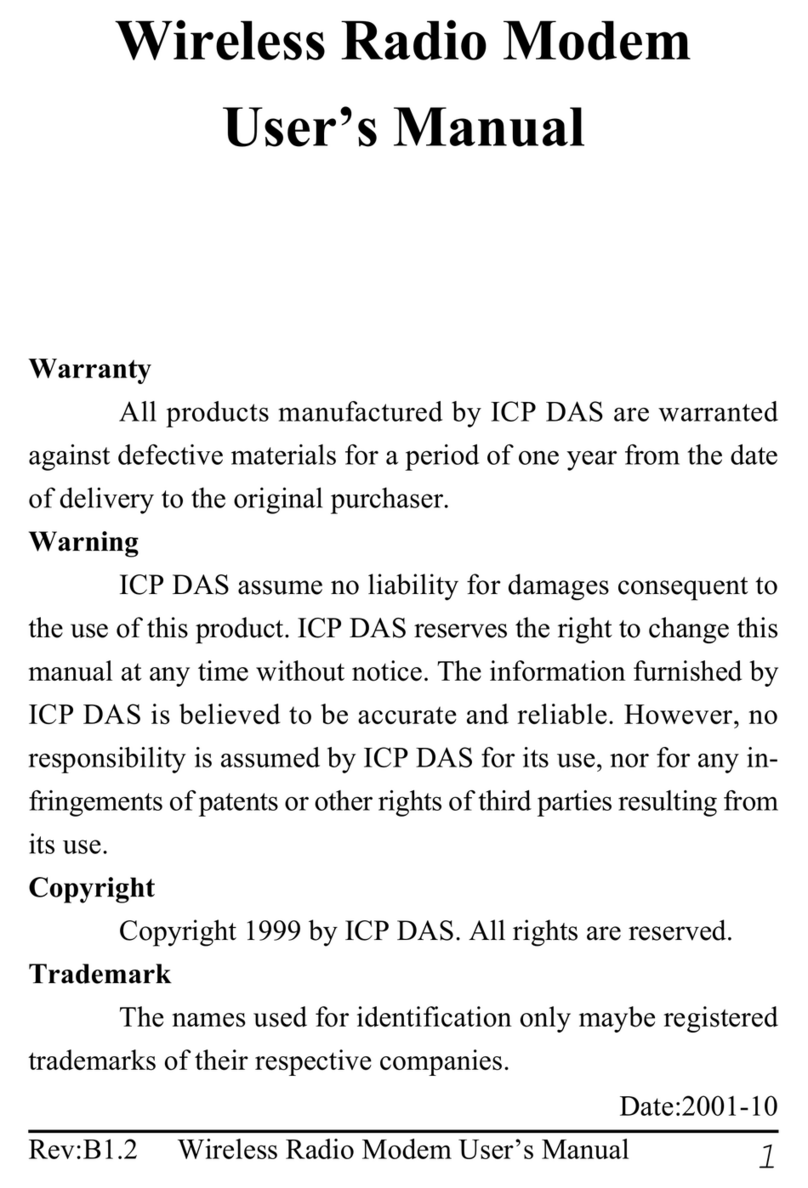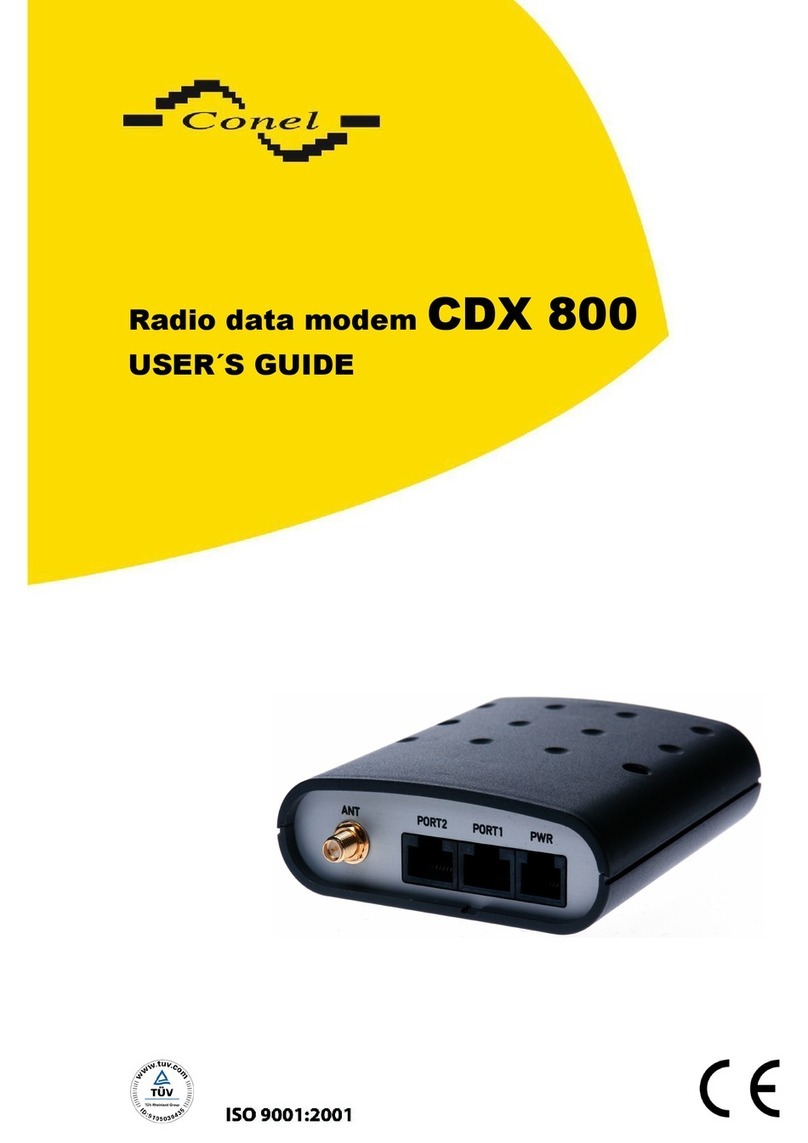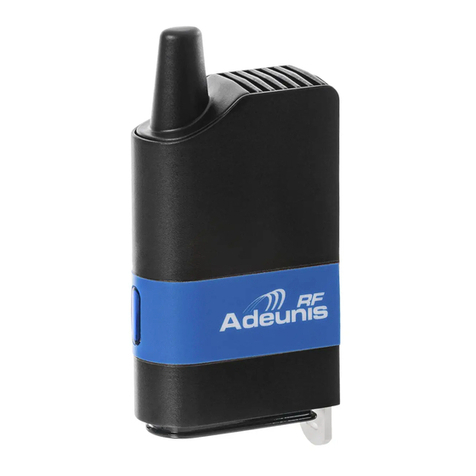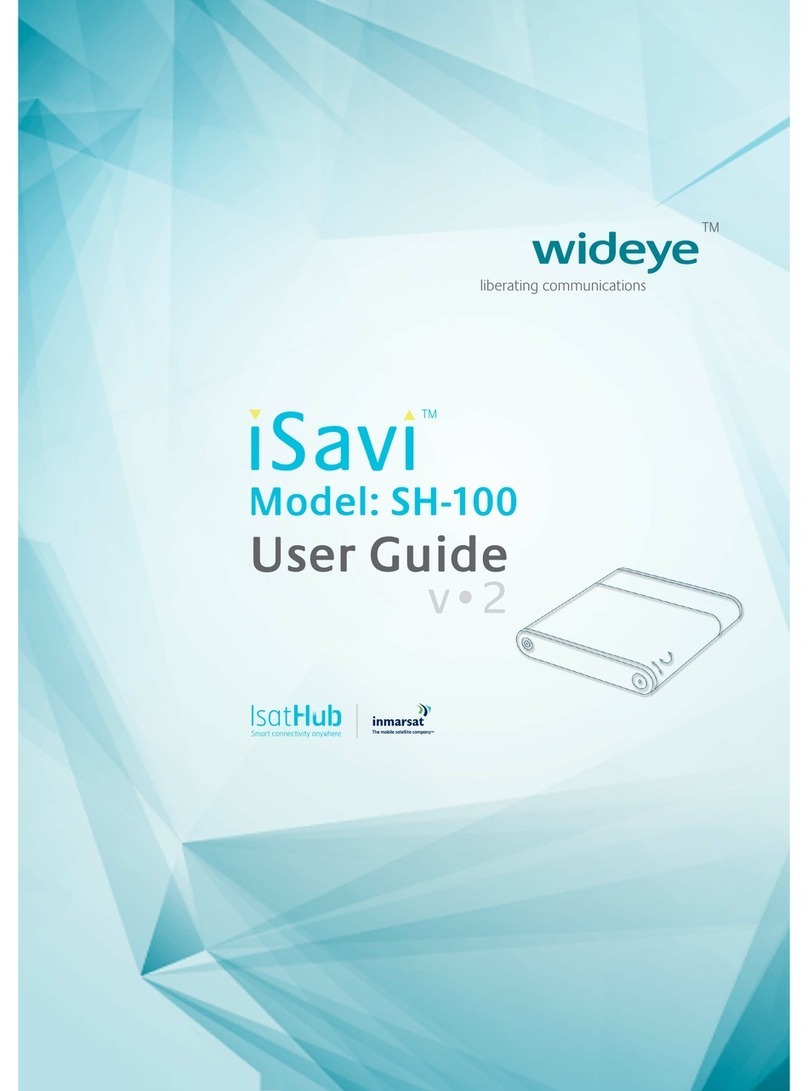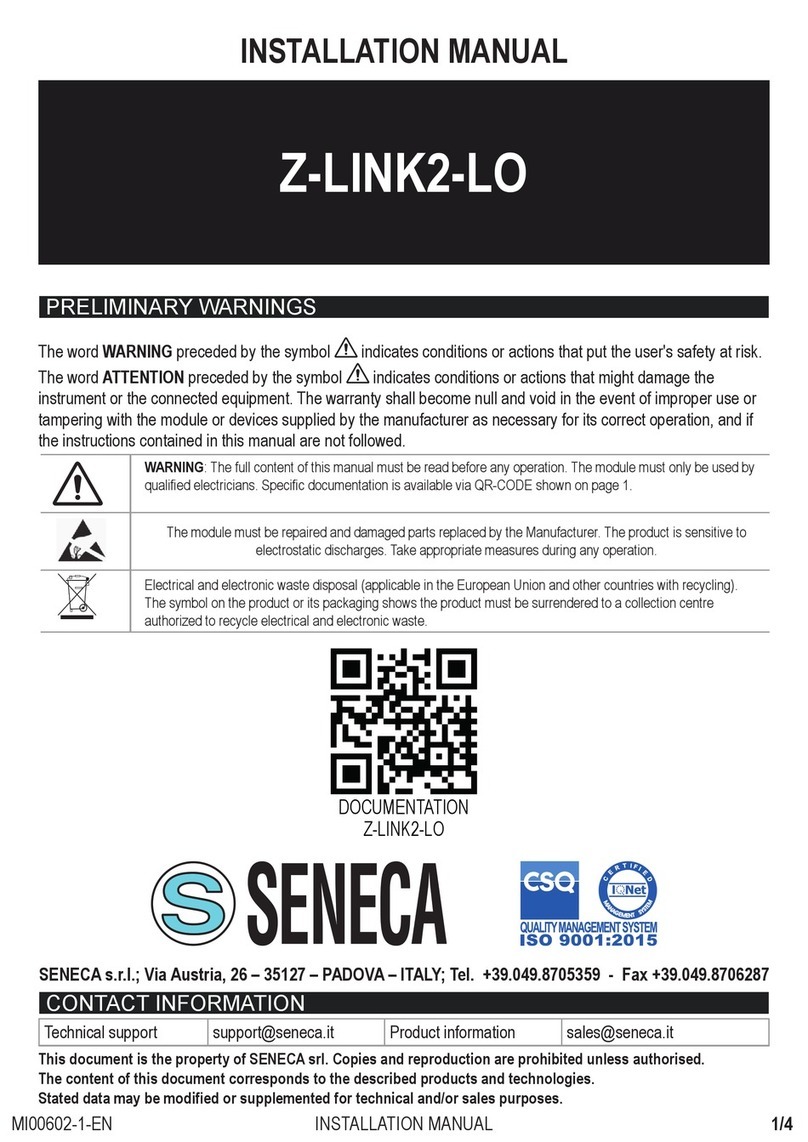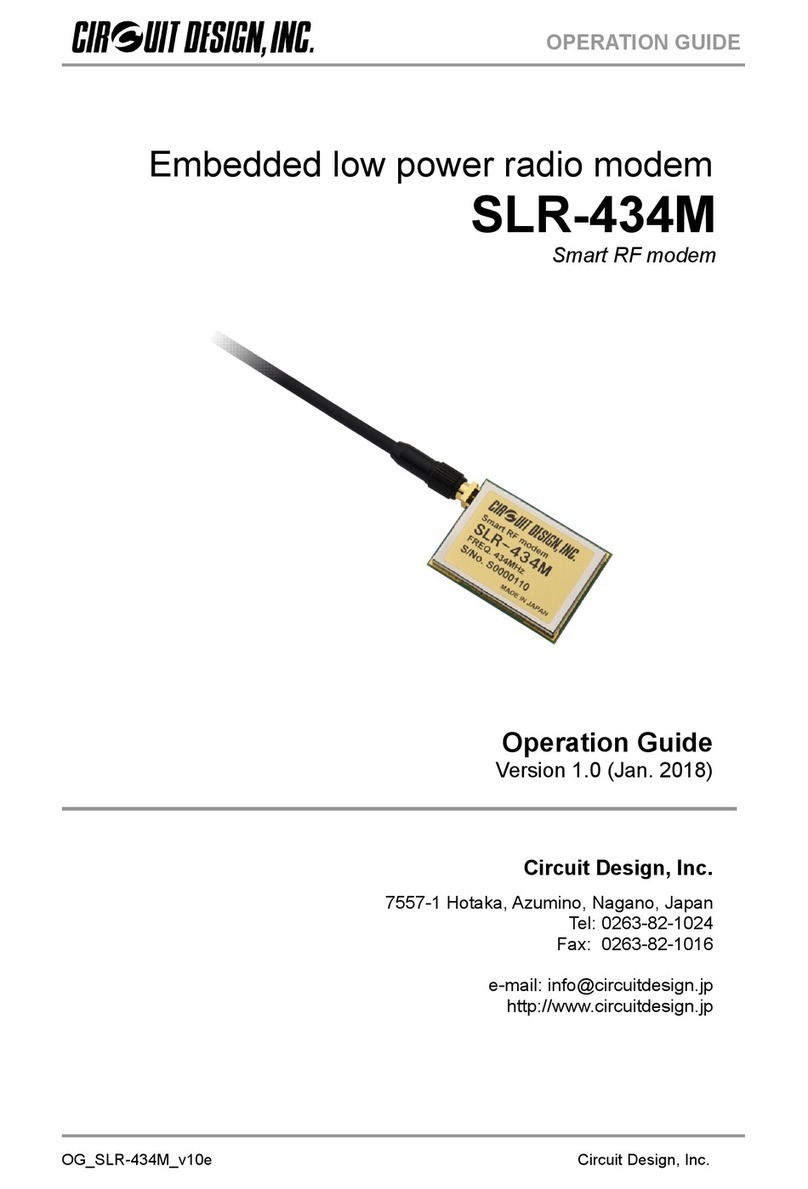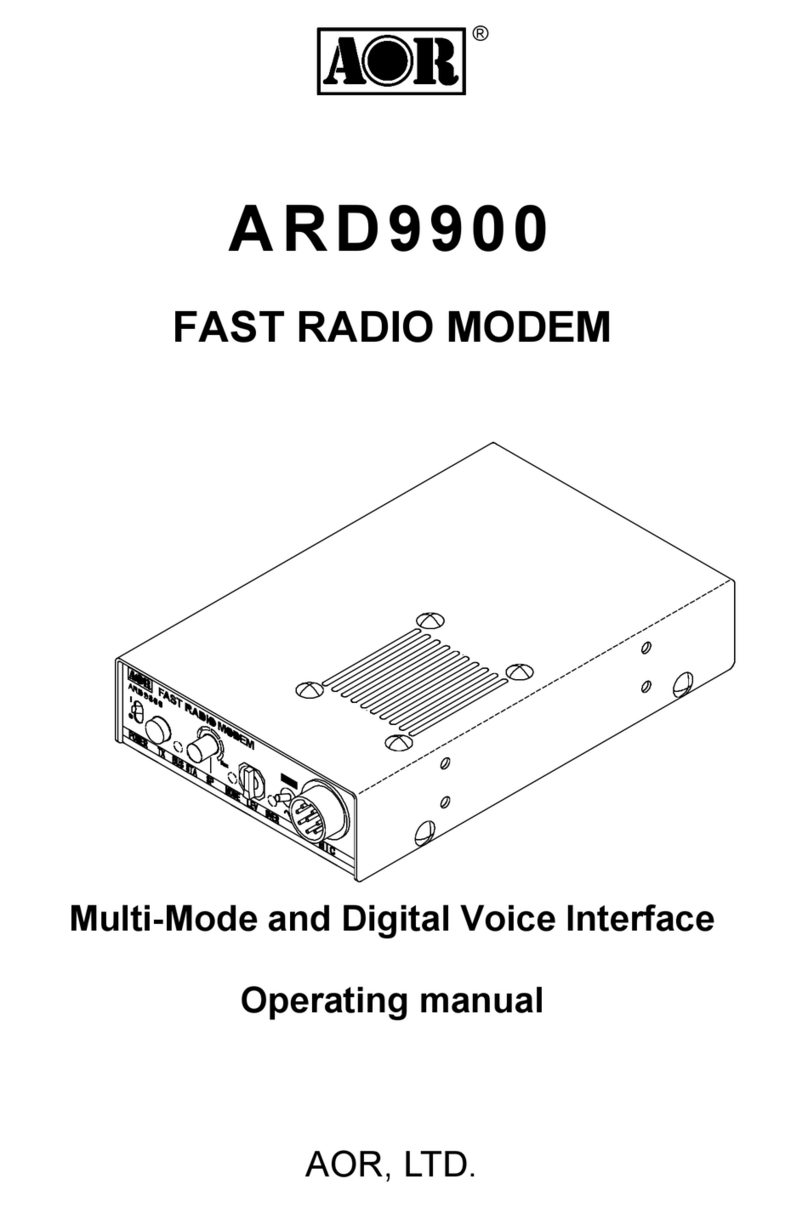9.2.1 Example – How to change TX/RX frequencies................................................................44
9.2.2 Restoring factory settings.............................................................................................45
9.2.3 Radio modem info .....................................................................................................45
9.2.4 Activating tests...........................................................................................................45
10 LCD & PUSH BUTTONS................................................................................... 46
10.1 LCD after power-up.................................................................................. 46
10.2 Info pages ................................................................................................ 47
10.3 How to modify the settings on LCD .......................................................... 48
10.3.1 Saving the modified settings........................................................................................48
10.3.2 Example – how to change the radio frequency on LCD...................................................49
10.3.3 Example – how to toggle settings ON or OFF on LCD ...................................................50
10.3.4 How to restore the factory settings on LCD....................................................................51
11 SL COMMANDS .............................................................................................. 52
11.1 Changing parameters using the SL COMMANDS .................................... 52
11.1.1 Addressing related SL commands ................................................................................53
11.1.2 Channel list related SL commands ...............................................................................54
11.1.3 Serial port related SL commands .................................................................................55
11.1.4 Memory related SL commands ....................................................................................55
11.1.5 Operation mode .......................................................................................................55
11.1.6 Modem info related SL commands...............................................................................56
11.1.7 Radio frequency related SL commands .........................................................................57
11.1.8 Other SL commands ..................................................................................................59
12 CHANNEL LIST................................................................................................ 60
13 REPEATER MODE AND ADDRESSING ............................................................. 61
13.1 Repeater................................................................................................... 61
13.2 Addressing ............................................................................................... 62
13.2.1 Connection between two points...................................................................................64
13.2.2 System of one base station and several substations ........................................................64
13.3 Using repeaters and addresses in the same system............................... 65
13.3.1 System with several repeaters ......................................................................................65
13.3.2 Repeater chain using address pairs ..............................................................................66
13.3.3 Repeater chain using dual addressing ..........................................................................67
13.3.4 Redundant repeater chain...........................................................................................67
14 MESSAGE ROUTING....................................................................................... 68
14.1 Introduction to Message Routing,............................................................ 68
14.1.1 Features of Message Routing ......................................................................................69
14.1.2 Limitations of Message Routing ...................................................................................69
